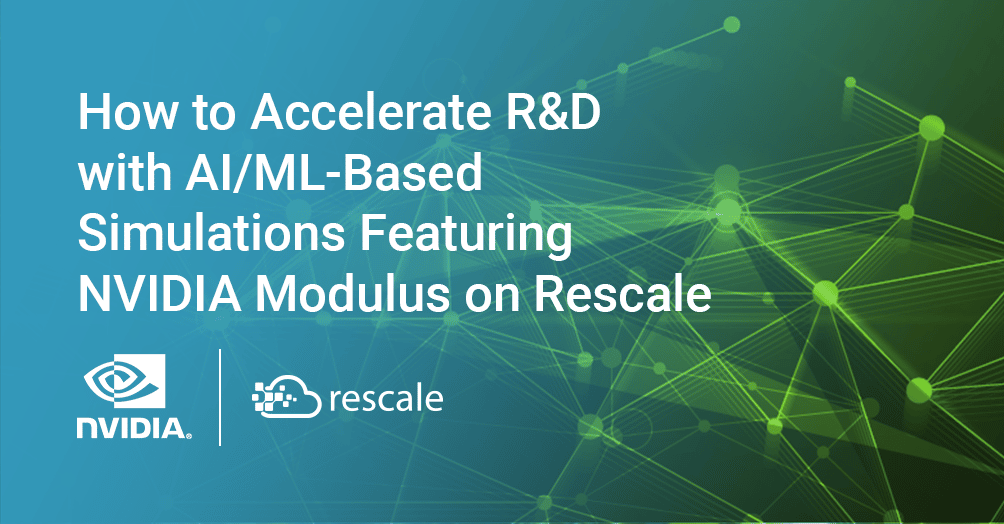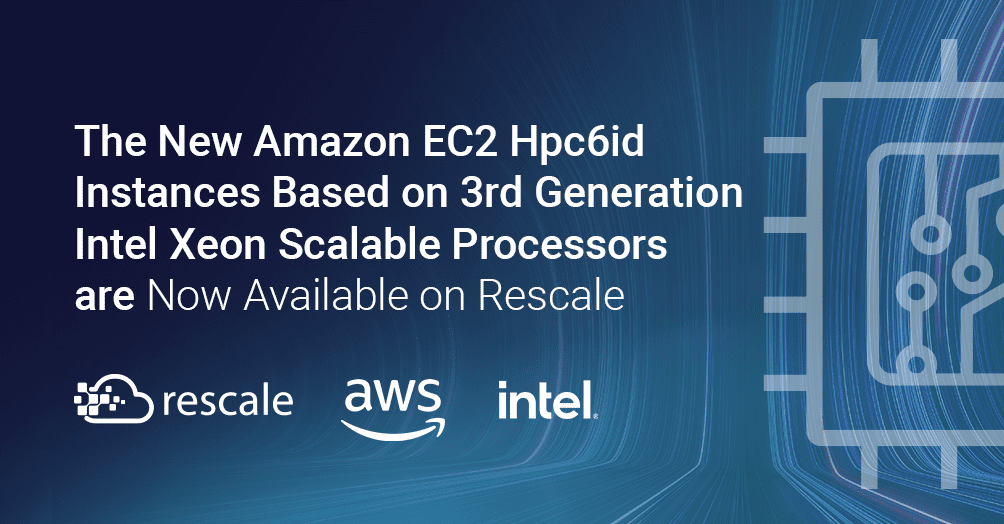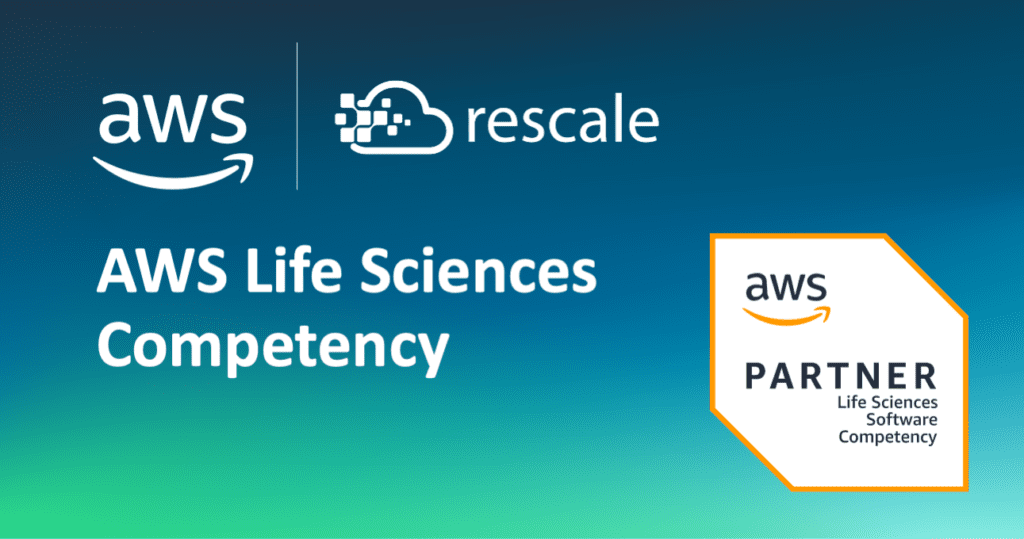How to Accelerate R&D with AI/ML-Based Simulation Featuring NVIDIA Modulus on Rescale
Scientific & Engineering Design Evolves from Prototypes to Simulation to AI
Scientific and engineering simulation changed the game by enabling R&D professionals to test design parameters digitally rather than physically through prototyping, and therefore iterate faster on designs. Simulation based on physics solvers, while faster and cheaper than prototyping, can still be very computationally intensive and expensive to iterate. The rise of AI applied to simulation addresses this challenge by helping R&D professionals search design spaces more efficiently and reduce the amount of computationally intensive simulation required to optimize designs.
We are starting to see AI applied to simulation everywhere. Although still early in the adoption cycle, AI for R&D has the potential to dramatically revolutionize how R&D works. For example, today, forward-thinking organizations have embedded AI/ML into critical design workflows: aerospace companies predict results of computational fluid dynamics in airfoil design, semiconductor companies search large, complex design spaces more efficiently for optimal chip designs, and biotechnology companies predict combinations of molecules that will be successful in treating illnesses through clinical trials. The application of AI will continue to grow as AI software tools and hardware processing power evolve.
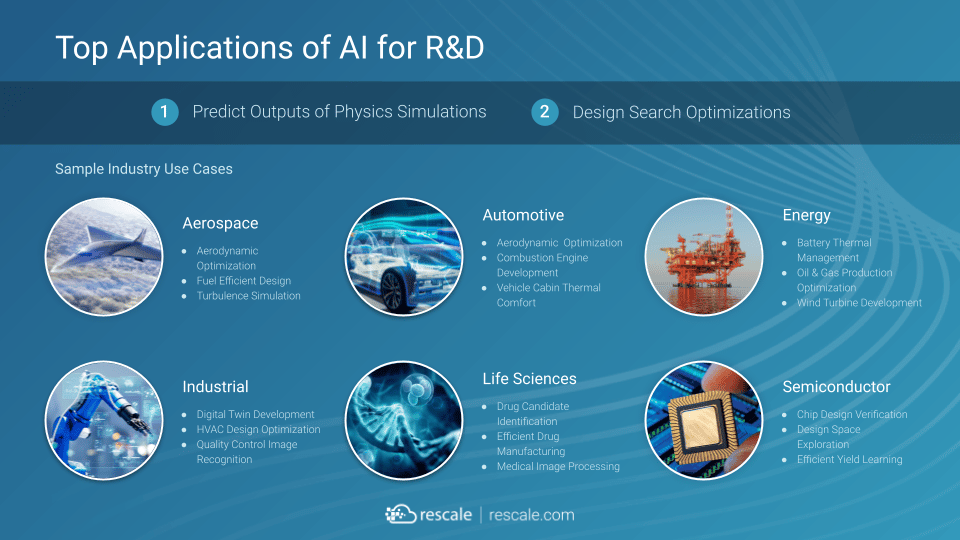
With New Applications of AI for R&D Comes New IT Challenges
However, AI applied to simulation creates new IT challenges. Organizations have to create new environments that support new AI tools. Often, AI tools need to co-exist with conventional physics-based solvers to create end-to-end workflows that position R&D professionals for success. The combination of new and conventional tools dramatically increases the complexity of the full software-to-hardware technology stack. And as a result, many organizations find it difficult to get started with adopting these cutting-edge tools and miss out on their benefits.
At Rescale, we are committed to bringing the latest AI for R&D technologies to our customers. Earlier this year, we published a CFD+ML tutorial for airfoil design based on using AI applied to reduced-order modeling. Today, we are very excited to announce that NVIDIA Modulus is now available on Rescale. NVIDIA Modulus is a cutting-edge physics-ML framework for developing physics machine learning neural network models with near-real-time inference to solve physics problems and design scientific digital twins. The general availability announcement today follows our initial introduction of Modulus on Rescale during our NVIDIA GTC presentation, which featured an air-knife simulation surrogate model demonstration developed by our partner, Kinetic Vision.
“Rapid advances in both AI and GPUs are creating new possibilities for innovation in R&D,” said Mulyanto Poort, VP of High Performance Computing at Rescale. “NVIDIA is at the forefront of disruptive scientific and engineering simulation workflow technologies with new products like the AI-based NVIDIA Modulus framework, and we are eager to bring these new capabilities to our customers.”
Made possible by Modulus, the ability to train once and use the high-fidelity AI surrogate model to infer new simulation results for points in the design or operating space at near real time is a game changer. Because of transfer learning, the AI surrogate can significantly reduce the future design work. Modulus can be applied to a very wide range of physics-based simulation problems, and has recently been featured in use cases like extreme weather forecasting, wind turbine blade simulation, heat recovery steam generator simulation and semiconductor heatsink design. It is the ideal platform for domain experts to use Python APIs to develop AI models without having to be AI experts or get into the weeds of setting up scalable, performant training and inference pipelines.
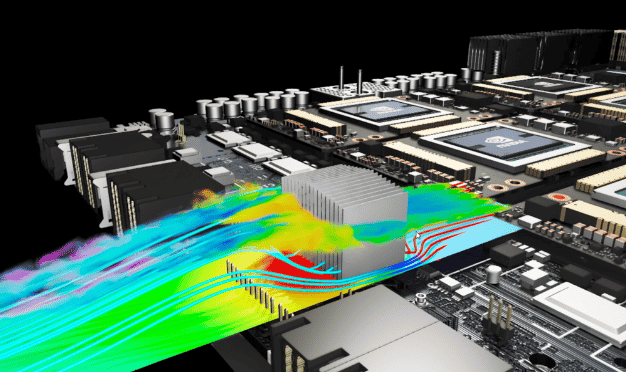
Rescale makes it exceptionally fast and turnkey easy to deploy NVIDIA Modulus on the most optimal cloud infrastructure with just a few clicks. Rescale combines NVIDIA Modulus with the latest NVIDIA GPU hardware like NVIDIA A100 Tensor Core GPUs and the upcoming NVIDIA H100 Tensor Core GPUs available through instance families provided by our cloud-service-provider partners like AWS, Azure, GCP, and Oracle. Software and hardware is organized into a single workflow environment on the Rescale platform for generating AI training data, inferences, final verifications, and model results with conventional physics solvers as needed.
“Innovation in R&D and simulation is accelerating thanks to physics-ML technology, allowing our customers to design and develop better products faster and in new ways,” said Chris Lamb, vice president of GPU computing software platforms at NVIDIA. “NVIDIA Modulus is enabling innovative companies like Rescale to help customers by making it incredibly simple to build and deploy physics-informed ML workflows to solve problems that are limited by traditional simulation methodologies.”
Get Started with NVIDIA Modulus on Rescale
Customers can easily get started with NVIDIA Modulus on Rescale using both the Rescale batch jobs and virtual desktop-based workstations workflows. Here’s a brief video example of how to run Modulus on Rescale:
Once the simulation results are completed, the Rescale platform terminates the simulation and shuts down all the cloud infrastructure. The beauty of using NVIDIA on Rescale is that it’s fully on demand. That means customers only pay for the resources while they are using them. For a more in-depth how-to example, please see our recently published NVIDIA Modulus on Rescale tutorial featuring a lid-driven cavity flow simulation.
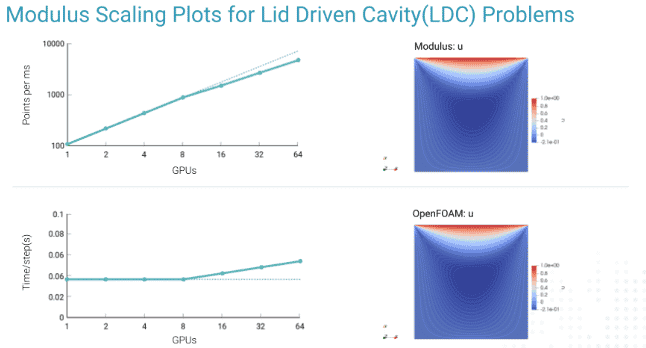
Rescale, in collaboration with NVIDIA, is changing the game once again for R&D professionals. With NVIDIA Modulus, scientists and engineers can train once and infer simulation results repeatedly in real time, saving a tremendous amount of time by running fewer conventional solver-based simulations. Rescale makes NVIDIA Modulus instantly available on the latest NVIDIA GPUs by providing a turnkey platform that covers the full software-to-hardware stack in the cloud, saving organizations a minimum of months or quarters of difficult and expensive onboarding and deployment time that can be used to accelerate product development timelines.
We look forward to showing you how AI can revolutionize your R&D productivity and how Rescale can help you get started today. To learn more by connecting with an “HPC and AI for R&D” expert at Rescale or to get started for free with up to 5 days of NVIDIA GPU access provided by Rescale, please contact us here or email partners@rescale.com. It’s that easy!
For more information on NVIDIA Modulus, please visit: https://developer.nvidia.com/modulus.

